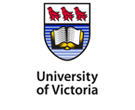Visions of community: A seventh movement critical phenomenological study
| Title | Visions of community: A seventh movement critical phenomenological study |
| Publication Type | Thesis |
| Year of Publication | 2005 |
| Authors | Bellefeuille GL |
| Academic Department | Social Work |
| Degree | Doctor of Philosophy Ph.D. |
| Number of Pages | 274 |
| University | University of Victoria (Canada) |
| City | Victoria, BC |
| Keywords | Community, Lifeworld, Child welfare community, Governance |
| Abstract | The research provides a descriptive understanding of the everyday lived experience of sense of community and an interpretive understanding of the aspects of meaning that are associated with this phenomenon. Using a critical hermeneutic phenomenology, which formed the conceptual and methodological framework for this study, I experienced an interpretive inquiry that takes place in the experiential reality of the lifeworld , not as an object of conversation, but as something that is intensely and personally encountered.The study was located in Northern British Columbia and involves six communities and four different stakeholder groups. Conversational interviews were conducted with 32 individuals representing an equal number of persons representing: recipients of services or have histories as volunteer workers in the community; human service practitioners employed in not-for-profit community-based resources; senior administrators employed in bureaucratic and non-bureaucratic organizations; and provincially delegated child protection workers. Written reflective journals were also kept by research participants for a four week period following the personal interview. Interview and journal data were transcribed into text and subjected to hermeneutic phenomenological thematic analysis. The phenomenological method then shifted into a mode of interpretative inquiry by engaging co-researchers in focus groups to reflect upon the essential themes and structures that emerged from the thematic analysis. Key areas of the phenomenological investigation included the meaning and lived experience of sense of community, how one participates in building community, the experience of absence of sense of community, and the perceived barriers to sense of community in ones life.Through this study, 18 essences of the lived experience of sense of community were identified. A further seven insights were revealed on how the findings might be useful for child welfare community governance and community-based practice. They are phenomenologically informative in that they provide an insightful understanding of the complex nature and meaning of sense of community.It is my hope that this research will encourage readers to reflect on their personal sense of community; and for those who work in government bureaucracy, consider questioning how the work might be transformed and wonder about how community governance might be lived differently. |
| URL | <u>http://proquest .umi .com/pqdweb ?did=1014314031 sid=5 Fmt=2 clientId=3916 RQT=309 VName=PQD</u> |


 The Social Economy Student Network
The Social Economy Student Network


